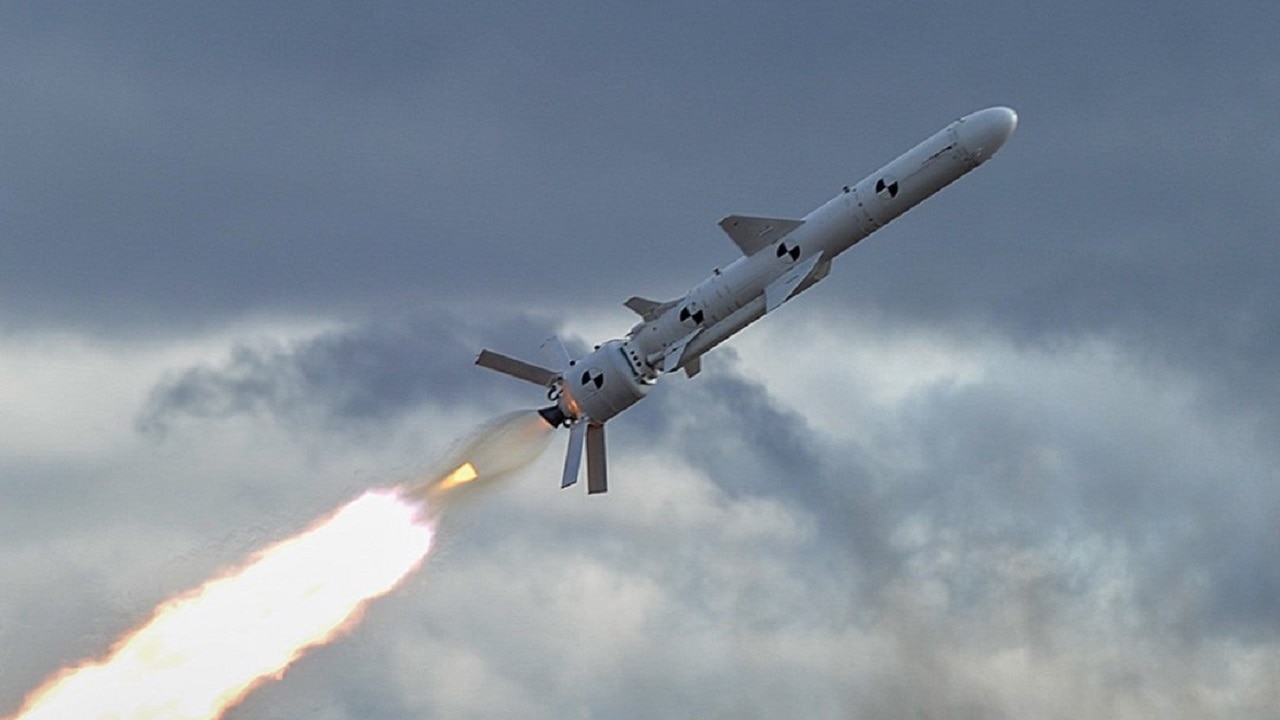What is the Neptune Missile that Sunk Russia’s Moskva Flagship? – New photographs and video footage emerged on Monday showing the sinking of the Russian guided-missile cruiser, the Moskva, being badly damaged by a fire caused by a Ukrainian missile right before it sank in the Black Sea last Thursday.
The images show the Moskva ship leaning to one side with plumes of black smoke billowing out of the side.
While Russia continues to claim that the damage was caused by a fire that started within the ship, Ukraine took credit for the damage and said it was struck by one of its Neptune missiles.
Retired U.S. Navy captain and the former director of operations for the U.S. Pacific Command’s Joint Intelligence Center, Carl Schuster, said on Monday that it appeared as though the missiles penetrated below the bridge of the ship before detonating.
“Assuming the photo is not faked in some way or photo-shopped, it looks like the missile(s) hit forward, which is not unexpected,” Schuster said. “Anti-Ship Cruise Missiles (ASCMs) tend to go for the center of the radar return, which typically is the forward section of the superstructure.”
What is the Neptune Missile?
The Neptune missile, named after the ancient Roman god of the sea, is a Ukrainian anti-ship cruise missile that was developed by the Luch Design Bureau and based on the Soviet-designed Kh-35 missile.
Two Neptune missiles struck the Moskva flagship in the Black Sea on April 13.
The missile can travel at speeds of 671 miles per hour, just below the speed of sound, and is capable of flying close to the water as it approaches its target. The Neptune missile also uses an active radar and inertial guidance to track its targets.
Ukraine’s Neptune missile has several advantages over the original Soviet Kh-35, and according to a brochure published in 2020 by the Luch Design Bureau, it can travel 300km and can be fired from no more than 25km away.
“‘NEPTUNE’ 360ST rocket system is a land-based cruise rocket system with anti-ship rockets. It is intended to defeat warships such as cruisers, destroyer frigate, corvette, airborne, tank landing ships and vehicles, which operate both independently and as part of the ship groups and amphibious groups, and coastal radiocontrast targets in visual and adverse meteorological conditions, at any time of the day and year, at active fire and electronic countermeasures of the enemy,” the brochure reads.
The missile consists of a mobile command post, a unified self-propelled launcher, a set of ground equipment, transport vehicle, transport-loading vehicle, and a rocket inside of a transport and launch container.
Russia’s Moskva is “Literally Irreplaceable”
The Week reported on Monday that the Russian flagship is “literally irreplaceable” and described how the Russian Ministry of Defense shared a video on Saturday that sowed dozens of surviving crew members from the ship.
Not only does Russia not have another Moskva to send to the region, if Russia intends to send more ships to the Black Sea to replace the ship it will need to persuade Turkey to open the Bosporus and the Dardanelles – two straits that were closed to warships by Turkey except for those returning to their home ports. The rule was established by the 1936 Montreux Convention.
Jack Buckby is a British author, counter-extremism researcher, and journalist based in New York. Reporting on the U.K., Europe, and the U.S., he works to analyze and understand left-wing and right-wing radicalization, and reports on Western governments’ approaches to the pressing issues of today. His books and research papers explore these themes and propose pragmatic solutions to our increasingly polarized society.

